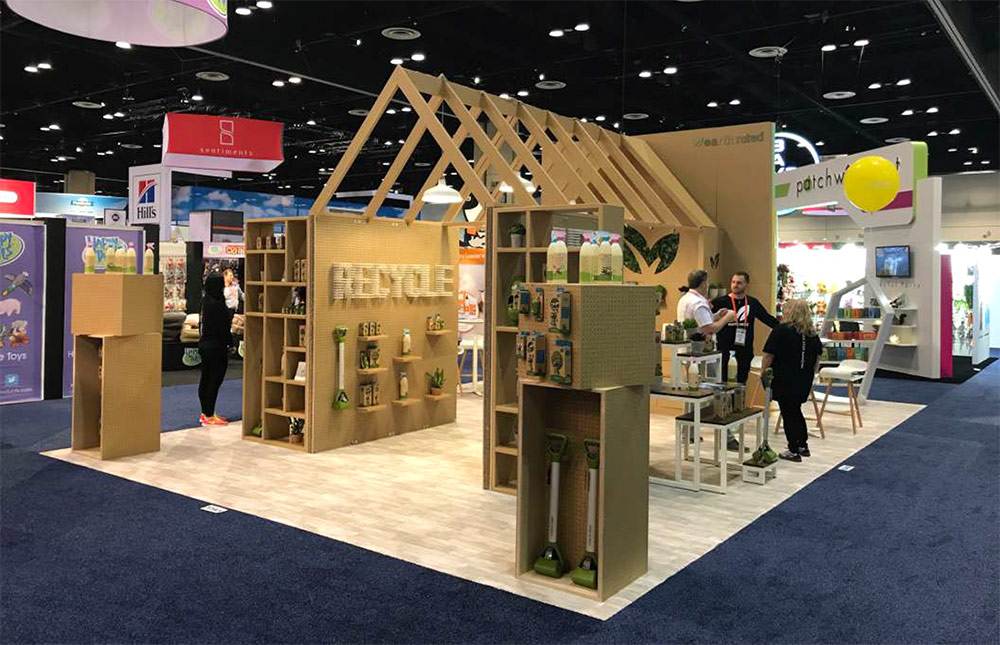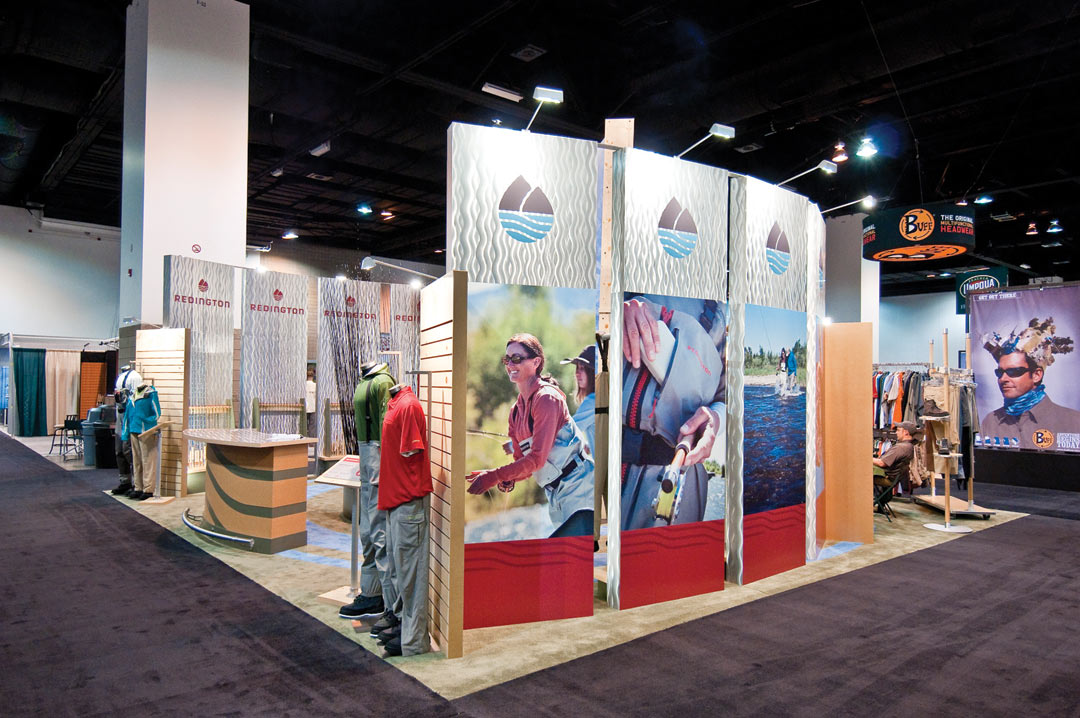Trade shows offer businesses an excellent opportunity to showcase their products and services, connect with potential customers, and build brand visibility. To make the most of a trade show experience, designing an effective trade show booth is crucial. In this post, we will explore key tips and strategies for designing a booth that attracts attention, engages attendees, and effectively communicates your brand message.
I. Set Clear Objectives:
a. Clearly define your goals and objectives for participating in the trade show. Determine what you want to achieve, whether it’s generating leads, promoting new products, or increasing brand awareness. Setting clear objectives will help guide your overall booth design and strategy.
b. Align your booth design with your objectives. Consider how the layout, visuals, and interactive elements can support your goals. For example, if lead generation is a priority, design your booth in a way that encourages attendees to provide their contact information or engage in conversations with your team.
II. Create an Eye-Catching Display:
a. Use bold and visually appealing graphics to capture attention from a distance. Incorporate high-quality images, compelling headlines, and clear messaging that communicates your value proposition and key offerings.

b. Integrate your brand colors, logo, and tagline to create a recognizable and cohesive visual identity. Consistency in branding helps reinforce brand recognition and increases your booth’s impact.
c. Consider the placement and positioning of key elements in your booth to maximize visibility. Ensure that important visuals and messaging are prominently displayed and easily seen from different angles.
III. Design an Open and Welcoming Layout:
a. Optimize the flow of traffic within your booth to encourage attendees to explore and engage. Avoid clutter and create clear pathways that guide visitors through different sections of your booth.
b. Create designated areas for product demonstrations, consultations, and customer engagement. This allows you to efficiently showcase your offerings and provide personalized interactions with attendees.
c. Ensure there is ample space for attendees to comfortably navigate and interact with your team. Provide seating areas or meeting spaces where attendees can have in-depth conversations or consultations.
IV. Showcase Your Products and Services:
a. Use visually appealing product displays, interactive demonstrations, or digital presentations to highlight the key features and benefits of your products or services. Make it easy for attendees to understand and experience what you have to offer.

b. Clearly communicate the unique value propositions and competitive advantages of your products or services. Highlight how they can solve customer pain points or meet specific needs, showcasing the value they bring.
c. Incorporate storytelling elements into your presentations or demonstrations. Tell compelling stories that connect with attendees on an emotional level, helping them envision how your offerings can make a positive impact in their lives or businesses.
V. Provide Engaging Experiences:
a. Offer interactive activities, games, or giveaways that encourage attendees to actively participate and spend time at your booth. This helps create a memorable experience and increases engagement.
b. Provide opportunities for attendees to interact with your team and ask questions. Train your booth staff to be knowledgeable, approachable, and proactive in engaging with visitors.
c. Incorporate technology, such as touch screens, virtual reality, or augmented reality, to enhance the engagement and create a unique experience. Use interactive digital tools or presentations to showcase your offerings in an innovative and engaging way.
VI. Incorporate Branding Elements:
a. Ensure that your booth design reflects your brand identity, including colors, typography, and messaging. Consistency in branding across all touchpoints helps reinforce brand recognition and creates a cohesive brand experience.
b. Use branded signage, banners, and promotional materials to reinforce brand recognition. Incorporate your logo, tagline, and key brand visuals in a prominent and consistent manner throughout your booth.

c. Consistently communicate your brand story and key messages throughout your booth. Make sure your team is well-versed in your brand messaging and can effectively communicate your unique value proposition and positioning to attendees.
VII. Plan for Functionality and Logistics:
a. Consider the practical aspects of your booth design, such as lighting, storage, and seating arrangements. Ensure that the booth layout is functional and optimized for both your team and attendees.
b. Ensure easy access to necessary resources, such as electricity, internet connectivity, and promotional materials. Plan for any technical requirements well in advance to avoid any last-minute issues.
c. Plan for efficient setup and dismantling, taking into account any logistical requirements or restrictions imposed by the trade show organizers. Create a timeline and allocate resources accordingly to ensure a smooth and timely execution of your booth setup and dismantling process.
In conclusion, designing an effective trade show booth requires careful planning, creativity, and a clear understanding of your objectives and target audience. By creating an eye-catching display, designing an open and welcoming layout, showcasing your products/services, providing engaging experiences, incorporating branding elements, and considering functionality and logistics, you can design a booth that stands out and effectively communicates your brand message at trade shows.
Key Takeaways:
- Set clear objectives and align your booth design with your goals.
- Use visually appealing graphics, brand colors, and logo to capture attention.
- Create an open and welcoming layout to encourage exploration and interaction.
- Showcase your products and services, emphasizing unique features and value propositions.
- Provide engaging experiences and interactive activities to attract and retain attendees.
- Incorporate consistent branding elements throughout the booth.
- Plan for functionality and logistics to ensure a smooth trade show experience.
Contact us for support in designing show booths that stand out at trade shows!

Leave a Reply